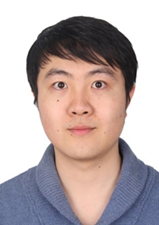Chenchong Wang*,Chunguang Shen,Wei Xu
The State Key Lab of Rolling and Automation, Northeastern University, Shenyang, Liaoning, China
Abstract: The microstructural recognition and quantification are significant for understanding the relationship between microstructure and mechanical properties of multiphase steel as mechanical properties lie to a large extent on the distribution, size and morphology of the microstructure. The recognition accuracy of traditional artificial identification based microstructural recognition is influenced by subjective factors such as the experience of the practitioner. With the continuous development of deep learning, especially computer vision, the technology can accurately extract the characteristics of the target image and calibrate complex images, which has broad application prospects in the field of microstructural recognition. In this study, datasets with small samples were used to train the U-Net neural network model, and the model was successfully applied to recognize ferrite in dual-phase steel and retained austenite in Q&P steel. Based on the model, the proportion of different phases in dual-phase steel and the distribution and content of retained austenite in Q&P steel can be rapidly quantified, which lays a foundation for the subsequent establishment of relationship between organization and mechanical properties.
The architecture of the U-Net neural network model used in this study is shown in Figure 1. It has better fitting ability for smaller sample data and less model parameters, which reduces the training time of the neural network model. In this study, the architecture was optimized by reducing the depth of the single-layer network to prevent over-fitting and changing the upper sampling layer to the deconvolution layer to enhance the model's perception of the image details and improve the generalization ability of the model. The recognition of ferrite in dual-phase steel is shown in Figure 2. By learning from the database composed of SEM images (Fig. a) and corresponding manually labeled images (Fig. b), the U-Net model can finally recognize ferrite automatically without reference to labeled image (Fig. c). The results show that the model has high prediction accuracy and can realize the intelligent microstructural recognition. Furthermore, the model can be used in other similar datasets of dual-phase steel and has good generalization ability.
The research results have demonstrated the great potential of deep learning in the field of microstructural recognition. The further research focuses on making full use of small sample data with high cost (e.g. limited EBSD data) and relatively large sample data with low cost (e.g. easily obtainable OM and SEM data) to accurately recognize and quantify the microstructure as it will shorten the time of characterization and reduce the cost, further improve the efficiency of discovering new material.
Keywords: Microstructural recognition; Deep learning; Computer vision

Figure 1 U-Net network architecture [1]
图1 U-Net神经网络模型原生架构[1]





Figure 2 Recognition of ferrite in DP steel and U-Net model accuracy and loss as a function of epoch
图2双相钢组织中铁素体的预测识别图及U-Net模型精度和损失函数随迭代次数变化曲线
基于计算机视觉的钢铁材料显微组织识别及定量化分析
王晨充*,沈春光,徐伟
东北大学 轧制技术及连轧自动化国家重点实验室
摘要:对于复相钢铁材料,其力学性能很大程度取决于显微组织的分布,尺寸与形貌,因而分类显微组织及定量化对于理解深层次的“组织-性能”之间关系十分重要。传统的显微组织标定主要基于人工识别,其标定精度受标定者经验等主观因素影响。随着深度学习技术的不断发展,尤其是计算机视觉,该技术可以准确提取目标图像的特征,并且可以在复杂图像中进行精准标定,在显微组织识别领域具有广泛应用前景。在本研究中,应用小样本量数据训练U-Net神经网络模型,并将该模型成功应用于识别双相钢中铁素体和马氏体以及Q&P钢中残余奥氏体,实现了钢铁材料中显微组织的智能化标定。基于该模型可以快速定量化双相钢中不同组织比例,以及Q&P钢中残余奥氏体分布和含量,为后续建立“组织-性能”关系奠定基础。
本研究采用的U-Net神经网络模型原生架构如图1所示,它对于较小样本的数据有较优的拟合能力,同时模型参数较少,从而降低了神经网络模型训练时间。本研究在原有架构上实现优化,降低了单层网络的深度以防止过拟合,同时上采样层改为反卷积层以增强模型对图像细节部分的感知,从而提高了模型的泛化能力。针对双相钢SEM组织的识别如图2所示,U-Net模型通过对SEM图(图a)和对应的人工标注的标签图(图b)组成的样本数据库进行学习,最终可在不参考标签图的情况下自动生成标注结果(图c),结果表明该模型有高的预测精度,可以利用其实现显微组织的智能标定。同时,该模型在其他相似的双相钢数据集中也能够良好的进行自动标注,其具有良好的泛化能力。
基于深度学习在钢铁材料显微组织识别领域的应用潜力,未来的研究方向是如何利用少量高耗时、高成本和大量低成本、低耗时的显微组织表征数据来精确识别显微组织并定量化,例如尽可能地利用有限的钢铁材料显微组织的EBSD数据和大量易获得的OM、SEM数据,这将缩短材料显微组织的表征时间、降低成本,进一步提高材料显微组织识别效率,并最终有利于提高新材料的研发效率。
关键词:组织识别;深度学习;计算机视觉

讲师,现就职于东北大学轧制技术及连轧自动化国家重点实验室,博士毕业于清华大学材料科学与工程系,美国西北大学材料基因工程国际知名团队——G.B.Olson课题组访问学者,长期从事基于材料基因工程的钢铁材料集成计算与组织性能调控研究。国家自然科学基金重大项目“基于薄带连铸基于薄带连铸亚快速凝固的非平衡相变与组织一体化调控”子课题负责人。现今主要研究方向为基于热动力学理论、机器学习算法及优化算法的钢铁材料组织性能预测与合金设计。
Email: wangchenchong@ral.neu.edu.cn